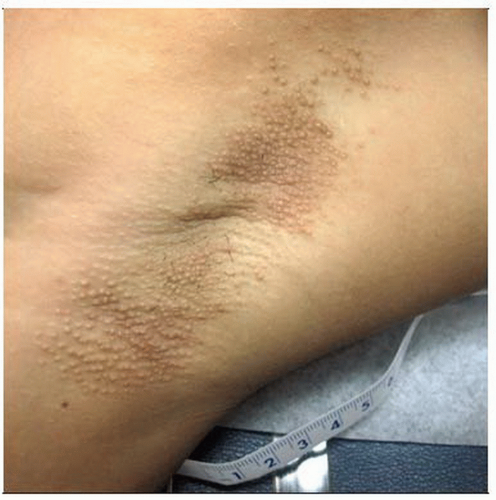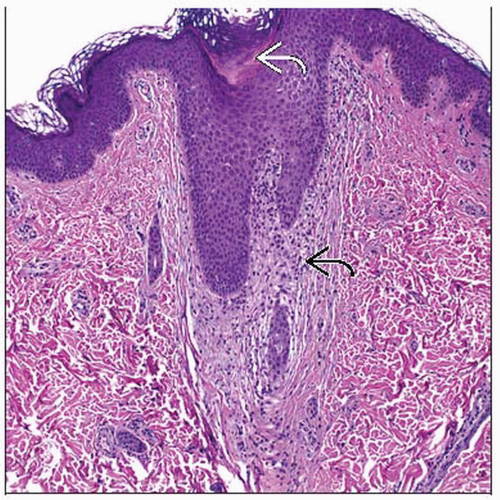Fox-Fordyce Disease
Michael W. Peterson, DO
Cary Chisholm, MD
Clay J. Cockerell, MD
Key Facts
Clinical Issues
Age
13-35 years old
Gender
90% female
Apocrine distribution
Primarily axilla, periareolar, and anogenital areas
Monomorphic discrete flesh-colored papules
Intense pruritus
Microscopic Pathology
Keratotic plugging of infundibulum
Follicular epidermal spongiosis and vesiculation
Perifollicular and periductal inflammation
Lymphocytes and occasionally eosinophils
Inflammation does not usually involve sweat glands
± rupture of associated apocrine gland
Perifollicular foam cells are common
 Fox-Fordyce disease is characterized by grouped papules in the groin and, pictured above, the axilla. (Courtesy N. Agim, MD.) |
TERMINOLOGY
Synonyms
Apocrine miliaria
Definitions
Keratin plugging of apocrine glands resulting in sweat retention and rupture of superficial apocrine duct
ETIOLOGY/PATHOGENESIS
Unknown
Multiple possible triggers
Hormonal factors
Emotional stimuli
Physical stimuli
Keratin Plugging of Apocrine Glands
Causes sweat retention
Ultimately distention and rupture of gland
Stay updated, free articles. Join our Telegram channel

Full access? Get Clinical Tree





